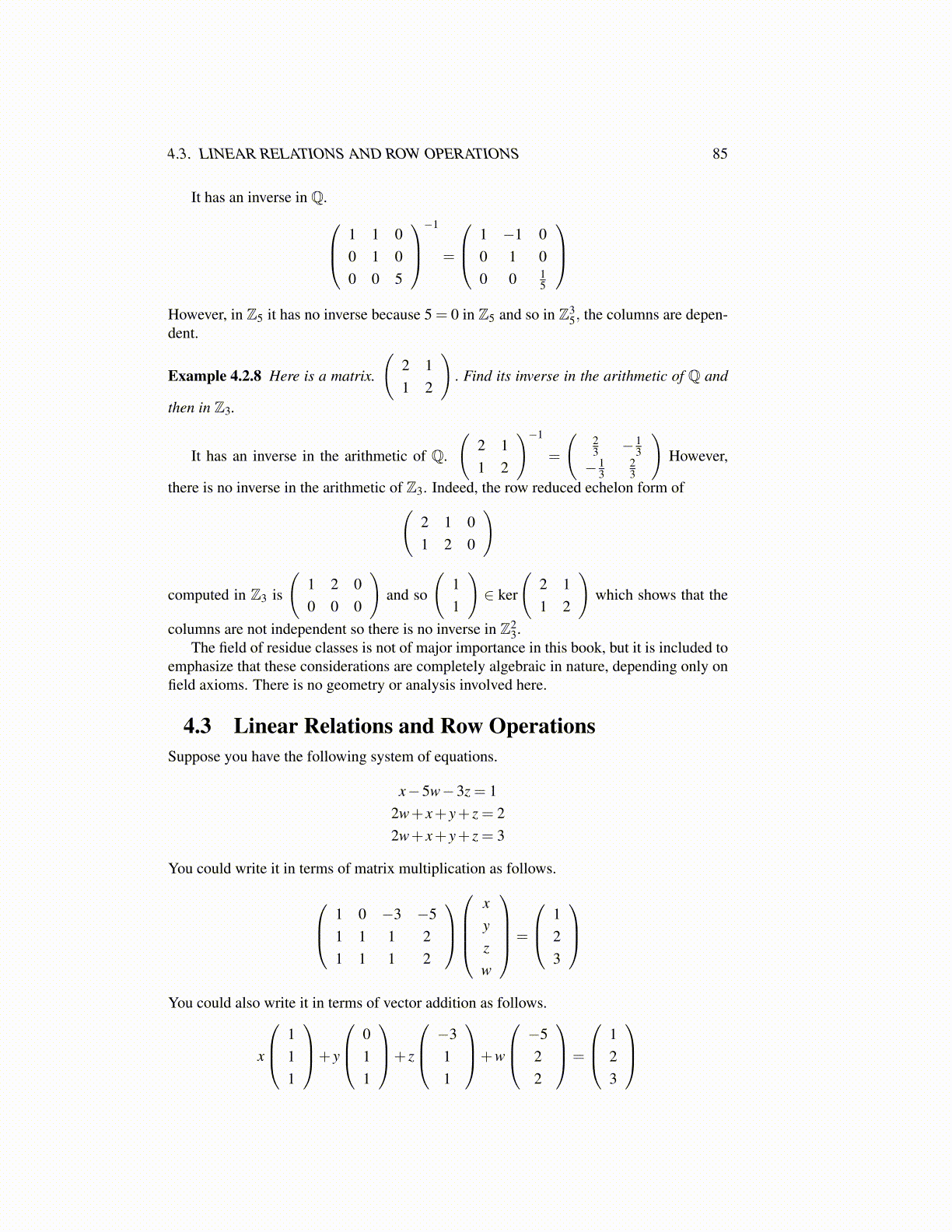
4.3. LINEAR RELATIONS AND ROW OPERATIONS 85
It has an inverse in Q. 1 1 00 1 00 0 5
−1
=
1 −1 00 1 00 0 1
5
However, in Z5 it has no inverse because 5 = 0 in Z5 and so in Z3
5, the columns are depen-dent.
Example 4.2.8 Here is a matrix.
(2 11 2
). Find its inverse in the arithmetic of Q and
then in Z3.
It has an inverse in the arithmetic of Q.
(2 11 2
)−1
=
(23 − 1
3− 1
323
)However,
there is no inverse in the arithmetic of Z3. Indeed, the row reduced echelon form of(2 1 01 2 0
)
computed in Z3 is
(1 2 00 0 0
)and so
(11
)∈ ker
(2 11 2
)which shows that the
columns are not independent so there is no inverse in Z23.
The field of residue classes is not of major importance in this book, but it is included toemphasize that these considerations are completely algebraic in nature, depending only onfield axioms. There is no geometry or analysis involved here.
4.3 Linear Relations and Row OperationsSuppose you have the following system of equations.
x−5w−3z = 12w+ x+ y+ z = 22w+ x+ y+ z = 3
You could write it in terms of matrix multiplication as follows.
1 0 −3 −51 1 1 21 1 1 2
xyzw
=
123
You could also write it in terms of vector addition as follows.
x
111
+ y
011
+ z
−311
+w
−522
=
123